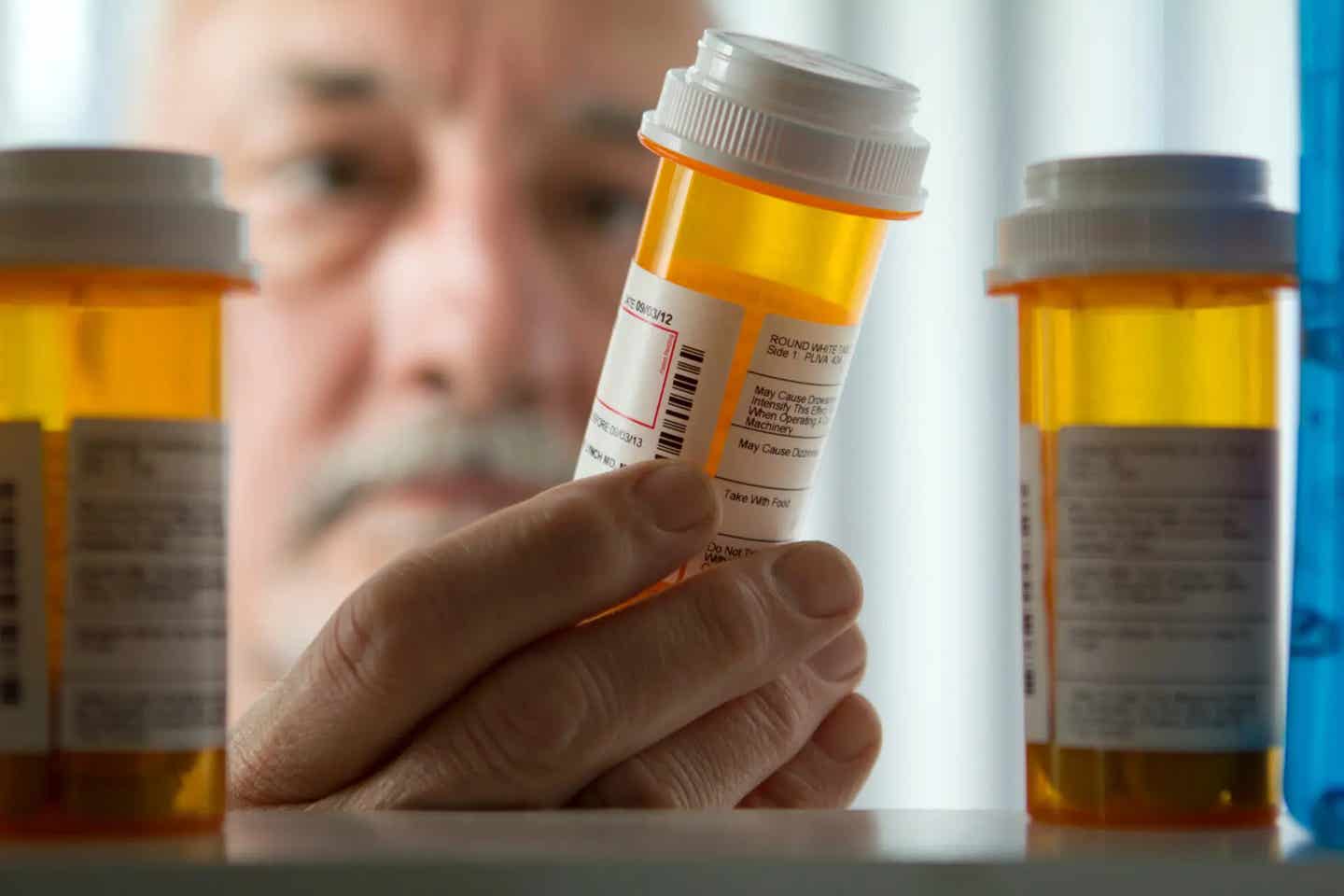Breakthrough medication could stop migraines before headaches even start
This drug could offer significant relief, allowing people to continue their daily activities with minimal or no symptoms.

By inhibiting this protein, ubrogepant may help prevent the progression of migraines from the initial warning signs to full-blown headaches. (CREDIT: CC BY-SA 3.0)
A recent study published in the Neurology journal, sheds light on the potential of ubrogepant, a medication that may help you manage migraines more effectively when taken at the first signs of an impending attack. This drug could offer significant relief, allowing you to continue your daily activities with minimal or no symptoms.
Ubrogepant works as a calcitonin gene-related peptide (CGRP) receptor antagonist. CGRP is a protein known to play a crucial role in the migraine process. By inhibiting this protein, ubrogepant may help prevent the progression of migraines from the initial warning signs to full-blown headaches.
“Migraine is one of the most prevalent diseases worldwide, yet so many people who suffer from this condition do not receive treatment or report that they are not satisfied with their treatment,” says Dr. Richard B. Lipton, the study’s author and a Fellow of the American Academy of Neurology.
Dr. Lipton is affiliated with Albert Einstein College of Medicine in Bronx, New York. He adds, “Improving care at the first signs of migraine, even before headache pain begins, can be a key to improved outcomes. Our findings are encouraging, suggesting that ubrogepant may help people with migraine function normally and go about their day.”
The study enrolled 518 participants who had been experiencing migraines for at least a year. Each participant had been dealing with two to eight migraine attacks per month in the three months leading up to the study. Importantly, these individuals could reliably identify when a migraine was about to start, thanks to early symptoms like sensitivity to light and sound, fatigue, neck pain, stiffness, or dizziness.
Participants were asked to treat two migraine attacks during a two-month period. The research team divided them into two groups.
The first group received a placebo for their first instance of pre-headache symptoms, followed by a 100-milligram (mg) dose of ubrogepant for their second episode. The second group followed the reverse order, taking ubrogepant first and the placebo second.
To assess how migraines impacted their daily activities, participants recorded their experiences in a diary, using a scale from zero to five. A rating of zero meant they were “not at all limited – I could do everything,” while a rating of four meant they were “extremely limited.”
Related Stories
The results were promising. Twenty-four hours after taking the drug or placebo, 65% of those who took ubrogepant reported themselves as “not at all limited – I could do everything,” or “a little limited,” compared to just 48% of those who took the placebo.
Even within two hours of taking the medication, participants who took ubrogepant were 73% more likely to report that they had “no disability, able to function normally,” compared to those who took the placebo.
This rapid relief suggests that ubrogepant may be an effective way to nip migraines in the bud, allowing you to resume your day without significant interruption.
“Based on our findings, treatment with ubrogepant may allow people with migraine who experience early warning signs before a migraine occurs to quickly treat migraine attacks in their earliest stages and go about their daily lives with little discomfort and disruption,” says Dr. Lipton. He also highlights that these findings are particularly relevant for individuals who can reliably predict an impending migraine based on their early symptoms.
However, the study had some limitations. Participants recorded their symptoms and medication use in electronic diaries, so there is a possibility that not all information was recorded accurately. Despite this, the results offer a promising outlook for those who struggle with migraines and are looking for a way to manage their symptoms more effectively.
It’s worth noting that this study was funded by AbbVie, the pharmaceutical company that manufactures ubrogepant. While funding sources are always important to consider, the study’s design and outcomes provide valuable insights into how this medication could improve life for many people.
For those who experience migraines, especially with reliable warning signs, this research suggests that ubrogepant could be a game-changer in managing your condition. By taking the medication at the first signs of an attack, you might find that your migraines become less disruptive, allowing you to maintain your daily routine with greater ease.
What causes migraines?
Migraines are a complex neurological condition with multiple contributing factors. According to the Mayo Clinic, Cleveland Clinic, and the National Institute of Neurological Disorders and Stroke (NINDS), the exact cause of migraines isn't fully understood, but they are believed to result from a combination of genetic, environmental, and neurological factors. Here's an overview of what is known:
Genetic Predisposition:
- Family History: Migraines often run in families, suggesting a genetic component. If one or both of your parents have migraines, you're more likely to experience them as well.
Brain Chemistry and Nerve Signals:
- Neurotransmitters: Migraines are linked to changes in brain chemicals, such as serotonin, which plays a role in regulating pain. During a migraine, serotonin levels may drop, triggering the release of other chemicals that cause blood vessels in the brain to swell, leading to pain.
- Cortical Spreading Depression (CSD): This is a wave of electrical activity that spreads across the brain, which may be responsible for the aura (visual disturbances) that some people experience before a migraine. CSD can also activate the trigeminal nerve, a major pain pathway, leading to the headache phase of a migraine.
Environmental and Lifestyle Triggers:
- Stress: Emotional stress can trigger migraines in some individuals. This could be due to the body's response to stress, which includes the release of certain chemicals that provoke pain.
- Dietary Factors: Certain foods and drinks, like aged cheeses, alcohol (especially red wine), and foods with high levels of caffeine, can trigger migraines. Skipping meals or fasting can also be a trigger.
- Hormonal Changes: Fluctuations in hormones, particularly in women, can trigger migraines. Many women report migraines around their menstrual period, during pregnancy, or at menopause.
- Sleep Patterns: Lack of sleep or changes in sleep patterns can trigger migraines. Both too much and too little sleep are common triggers.
- Environmental Factors: Sensory stimuli like bright lights, loud sounds, or strong smells can provoke migraines. Weather changes, particularly changes in barometric pressure, can also be a trigger.
Neurological Factors:
- Overactivity in Pain Pathways: Some theories suggest that people with migraines have an overactive trigeminal nerve, which is responsible for sensation in the face and head. This overactivity can lead to the intense pain experienced during a migraine.
- Brainstem Involvement: There is evidence that the brainstem, a part of the brain that connects the brain to the spinal cord, plays a role in the onset of migraines. Dysfunction in this area may contribute to the pain and other symptoms.
Immune System:
- Inflammation: Some studies suggest that inflammation in the brain or blood vessels might play a role in the development of migraines. The exact mechanism is still being researched.
Psychological Factors:
- Anxiety and Depression: There is a known link between migraines and mental health conditions like anxiety and depression. These conditions might exacerbate migraine symptoms or make an individual more susceptible to migraines.
Migraines are a highly individualized condition, meaning that what triggers a migraine in one person may not trigger it in another. Understanding your specific triggers and managing them can be key to reducing the frequency and severity of migraines.
Note: Materials provided above by The Brighter Side of News. Content may be edited for style and length.
Like these kind of feel good stories? Get The Brighter Side of News' newsletter.
Rebecca Shavit
Science & Technology Journalist | Innovation Storyteller
Based in Los Angeles, Rebecca Shavit is a dedicated science and technology journalist who writes for The Brighter Side of News, an online publication committed to highlighting positive and transformative stories from around the world. With a passion for uncovering groundbreaking discoveries and innovations, she brings to light the scientific advancements shaping a better future. Her reporting spans a wide range of topics, from cutting-edge medical breakthroughs and artificial intelligence to green technology and space exploration. With a keen ability to translate complex concepts into engaging and accessible stories, she makes science and innovation relatable to a broad audience.



